Apr
2023
Decodable Text Sources (Part 3 of 3)
This is part 3 of a series on decodable texts. If you haven’t read parts 1 and 2 yet, go do your homework! 🙂
In Part 1, I discussed what decodables are and why we need them. In Part 2, I discussed criteria for evaluating decodable texts, instructional implications, professionally developing staff, and potential limitations or considerations.
You likely already have some decodables in your classroom or building, or know where you can get access to them. Be sure to carefully consider the criteria outlined in post 2 to determine if and how you can use them to promote student phonics learning. You might very well decide it’s time to say goodbye to a beloved resource that will no longer serve you or your students.
Over the course of this post, I will discuss the following popular resources:
- UFLI decodables
- Benchmark Flagship Decodable Readers
- Decodable Fluency Readers
- Pioneer Valley “Phonics Storybooks” Decodables
- Little Blossom
- Beanstalk
- TCM Teacher Created Materials
- Lerner Books
- Reading Rocket suggestions
- UFLI suggestions
- UFLI decodables – these are free and online! Check out their Toolkit Resource page here and the Phonics S&S here. You’ll see a menu of lesson resources. Beginning with lesson 8, you’ll see you can click to download a decodable passage that is aligned to a phonics concept. Below is a screenshot of a lesson on short o. Notice how it is cumulative and includes short a and i, learned in lesson 10. UFLI is designed to be used universally, and you can purchase their manual for a very reasonable price (only $70!) for use with their generous and abundant free online presentations and resources.
Assets: Very instructive – clearly aligned to a research-based scope & sequence, paired with a targeted multi-sensory lesson and word work (ladders/chain). HIGH percentage of decodable words; the only words you need to pre-teach are the sight words ‘is’ ‘a’ and ‘the’ for this text. And they’re free!
Considerations: This story is not very comprehensible – there is no story structure, and some sentences are just plain silly (A man is not a fan?). It’s definitely not engaging – no illustrations, exciting or even cohesive topic upon which to build a discussion. However, the box is provided for students to illustrate and label (yay writing!) to show their comprehension, which is a very productive and engaging task. This text is very short.
2. Benchmark Flagship Decodable Readers or “BEC Decodables” – Yes, these are written by the guru himself, Wiley Blevins. The books are sold as a set – 39 Kindergarten books and 72 First Grade books. They are available in digital format (free with purchase), Spanish, and as take home B&W consumables (extra cost). There are several titles aligned with each phonics skill, which means students can have multiple practice opportunities. Bottom line: I think these belong in every single Kindergarten and First Grade classroom across the nation. These would be best used for universal instruction and tier 2 intervention.
Assets: Very instructive – there is a very clear scope and sequence provided here, which provides the phonics target skill as well as aligned HFWs you’ll want to pre-teach. The clarity of the S&S means you can easily align it to your existing curricular resources. Each book is at minimum 85% decodable. Very engaging – the topics are fun, illustrations are beautiful and high quality, and the story structures are easy to identify. The inclusion of science and social studies topics means you can provide background knowledge and cross curricular support, as well as have worthwhile material for comprehension and discussion.
Considerations: The Kindergarten books will include a rebus to support students in reading story or content words (like ‘airplane’). In the First Grade set, you’ll encounter more story or content words that students will need to figure out, either with picture support or instruction.
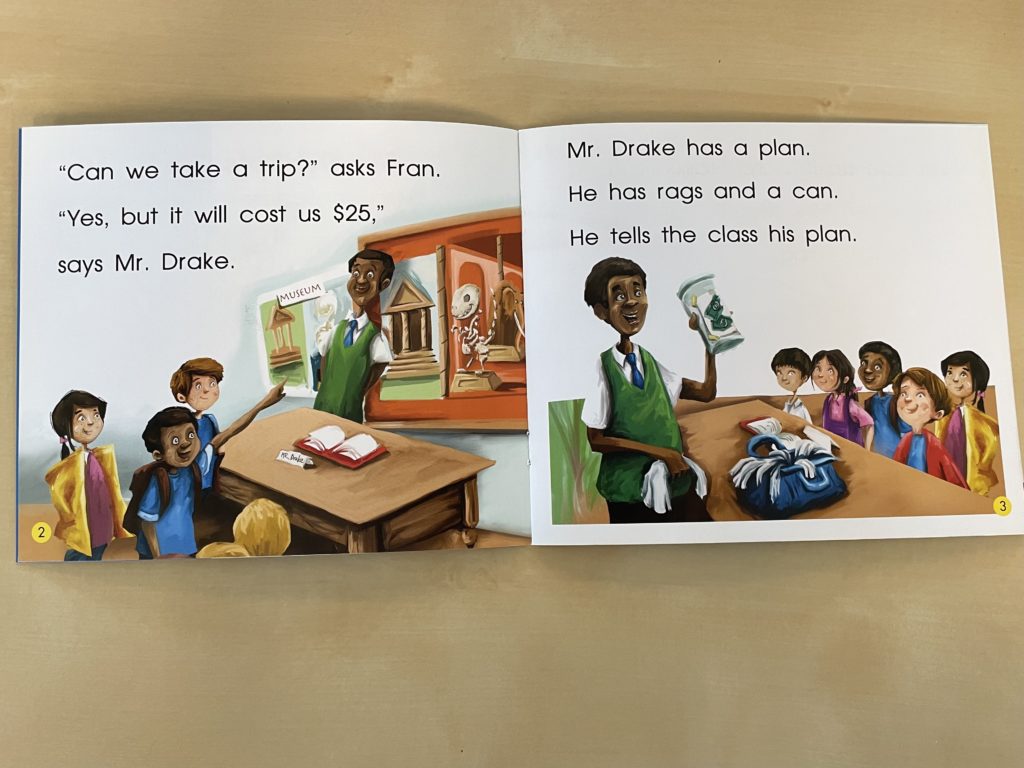
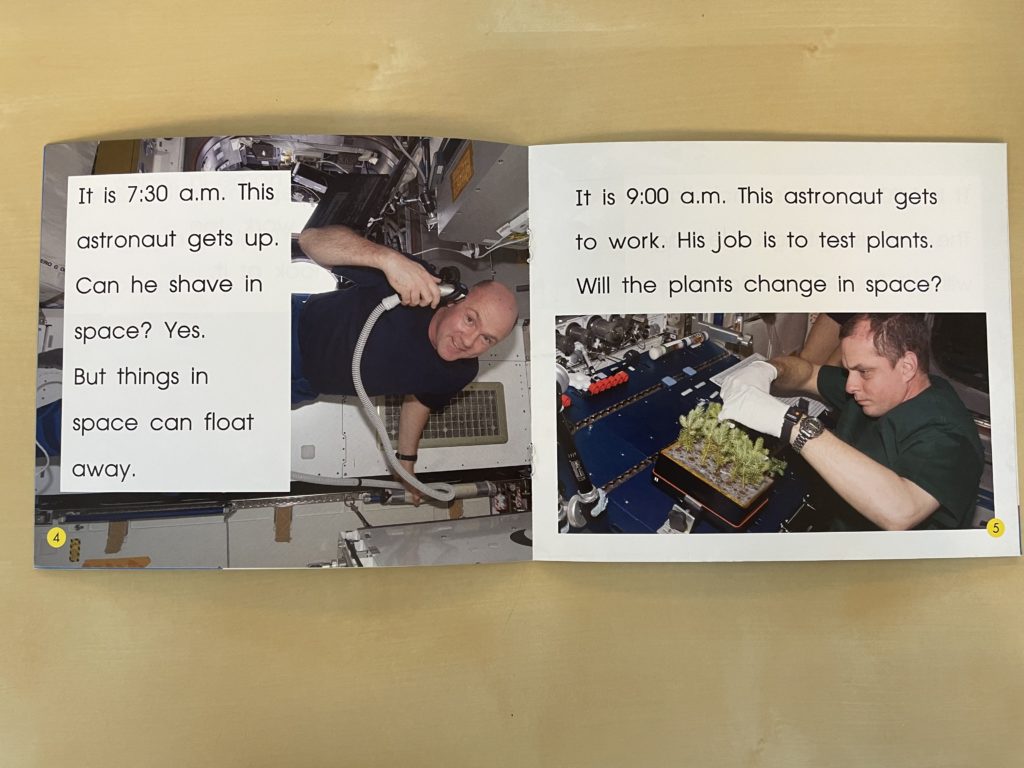
3. Benchmark Decodable Fluency Readers – Another product from BEC vetted by the guru himself, Wiley Blevins. There are 30 titles for Kindergarten, and 54 titles for 1st grade. Just like the Flagship decodables, they are sold only in sets. They are available in digital format (extra cost), and as take home B&W consumables (extra cost). Each title comes with a Teacher Card that outlines phonemic awareness activities, HFW activities (read, spell, write), and discussion questions (literal, inferential, making connections). These would be best used for universal instruction and tier 2 intervention. Why are these called “fluency” readers? From what I surmise, the premise is that strengthening phonics skills via decodable practice (and supporting activities) will help students master and transfer these skills from controlled text to authentic reading. If done well, I believe that is the purpose of all decodable books, so this term “decodable fluency readers” seems redundant. Bottom line: I’d also gladly purchase these for each Kindergarten and First Grade classroom. If I had to choose between these and the Flagship Decodables above, I’d go with the Flagship.
Assets: Very instructive – there is a very clear scope and sequence provided here, which provides the phonics target skill as well as aligned HFWs you’ll want to pre-teach. The publishers claim it is “aligned to the Science of Reading research.” The clarity of the S&S means you can easily align it to your existing curricular resources. Engaging illustrations with a story premise, characters, and a problem.
Considerations: You have to buy the entire set, and can’t pick individual books. These are not available in Spanish, as were the Flagship Decodables. They don’t feel as comprehensible as the Flagship books – a bit looser in terms of premise and story elements. I feel the Flagship books could be used for intervention in 2nd grade and beyond, but these Fluency Decodables are best developmentally for K/1st.
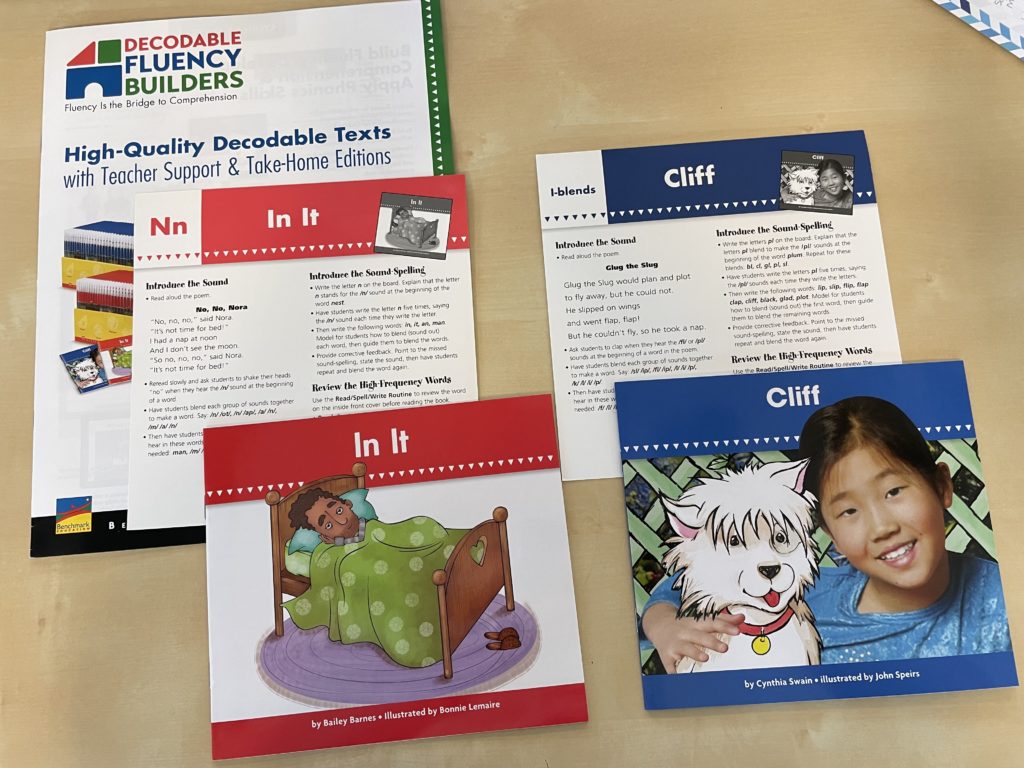
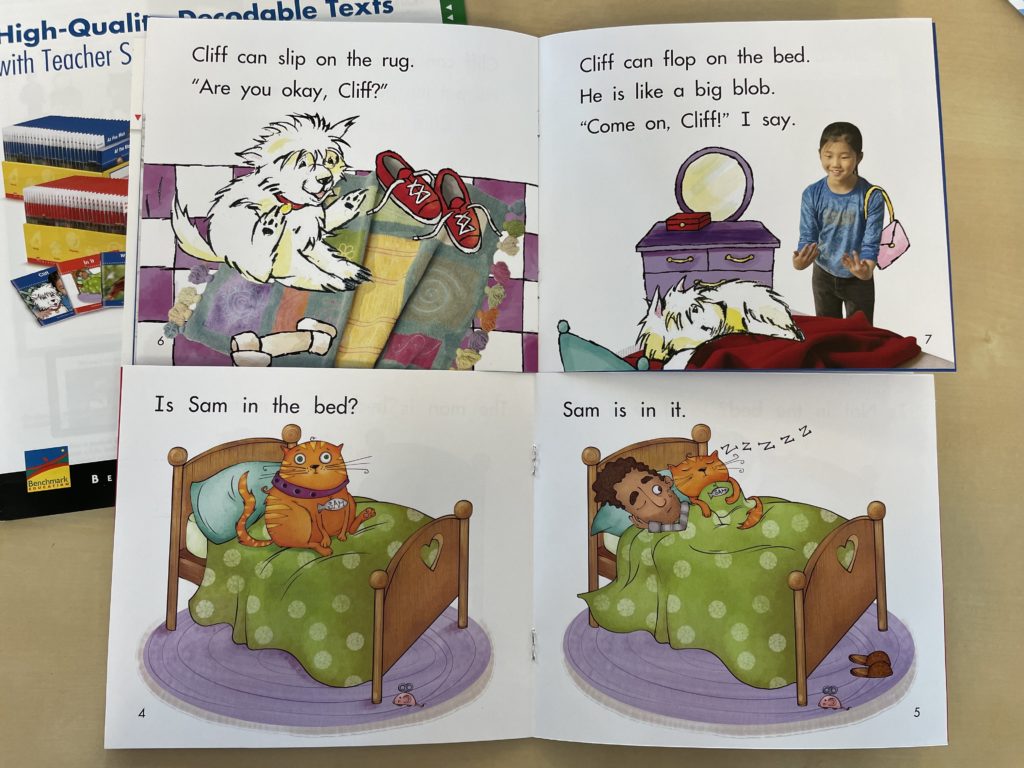
4. Pioneer Valley “Phonics Storybooks” Decodables I’ve already grown to know and love the Pioneer Valley books. They have such beautiful illustrations, high quality books, varying styles, engaging topics, series with familiar and repeating characters, chapter books, and we can count on them to be accurately leveled. Books are available online with Digital Literacy Footprints, which includes accompanying resources like running records and guided reading lesson plans. If you already know you love PV, then you’re going to love these decodables.
The decodables are organized into 4 levels:
Level 1 Ready, Set, Go! – Novice Readers
Phonics Skill Focus: Initial and Final Consonant Sounds and Short Vowels.
Helps novice readers develop concept of print, one-to-one matching, return sweep.
Level 2 On Our Way – Beginning Readers
Phonics Skill Focus: Short Vowels, Initial/Final Digraphs, and Initial Blends.
Level 3 Building Up – Early Readers
Phonics Skill Focus: Final Blends, Long Vowels, and Vowel Teams
Level 4 Moving On – Transitional Readers
Phonics Skill Focus: Vowel teams, Vowel–r Combinations, Trigraphs, and Diphthongs
Considerations: I’m going to start with considerations first, because they will influence the assets that I want to focus on. I really enjoyed levels 1 & 2, and found them to be very clear, consistent, aligned, instructive, and comprehensible. I would be very glad to purchase these to use in my classroom library or sets to use as a shared resource for small group instruction. However, levels 3 & 4 no longer felt like phonics readers. Many even seemed to be the same books I already use from their main library, just relabeled as a decodable with a few phonics words as the focus. As you can see in the picture below, the leap from level 2 (middle) to level 3 (top) is huge, with much more text, punctuation, and content. Out of 85 words on the page, only 4 words (5%) contained the target ‘oo’ phonics skill. The rest appeared to be fair play words – previously learned phonics skills, sight words, and a few story/content words (i.e. “principal”). There is balance or trade-off in all things; to get this highly engaging, quality illustrations and storyline, it is at the cost of phonics practice opportunities. However, you do get a longer controlled text for practicing fluency, as well as review. Consider your goals. Finally, the only genre offered is fiction.
Assets: (Speaking only about levels 1 & 2) Very instructive – there is a very clear scope and sequence which will allow you to easily match up texts with your phonics S&S. The sight words are clearly listed and are cumulative. The illustrations and storylines are very engaging, and readers will appreciate the familiar characters and attention to comprehensibility. Books are also available in digital format, which is great for home connection.
5. Little Blossom Stories – These decodables come from Cherry Blossom Press, which you may have heard of. There are 135 books in the set (which can be purchased individually, unlike all of the sets described above), and the publisher claims that the interest level of these books are Pre-K through 2nd grade. Each book has a Lexile level and a Guided Reading Level (A-C) which I actually find suspicious. As I mentioned in Part 1, decodables have an entirely different purpose and simply do not align to guided reading levels. Decodables are controlled texts aligned to a phonics scope and sequence and meant to provide phonics practice opportunities, whereas Leveled Texts are aligned to the developmental journey of the reader, and gradually become more challenging in terms of literary elements, text features, vocabulary, and longer and more complex sentences and plots. Decodables are meant to be rehearsal for Leveled Texts; they are not the same.
I could not find the phonics S&S easily accessible online. The publisher claims that each book contains at least two vowels as the phonics focus. There is a 1-page “Teacher’s Guide” you can download at the top of this page here, which provides some extension activities. Note: I do not agree that making predictions is a best practice for building comprehension, so I disagree with that suggestion in the teaching guide.
Assets: There is a word list at the end of each book to check for identification in isolation. The entire text is rewritten on one-page at the end, which is great for fluency practice, older students who might be embarrassed to read a book with illustrations, or a quick running record for accuracy and WPM rate. The illustrations are adorable, and you could have a discussion around the book.
Considerations: I do not find these books instructive in that I cannot locate a scope and sequence. If you were going to purchase these to support your Phonics S&S, you’d have a lot of work to do to align the materials. There seem to be quite a few non-phonetic and story/content words used to help create a more engaging plot. I cannot comment on sight words as I was unable to locate a schedule for them. The pages are very thin and stick together.
6. Beanstalk Science Decodables – So many decodables are fiction, so it’s kind of exciting to see some intentional nonfiction! After all, students really love learning content, which is a major driving factor for learning to read. There are 60 different science-based titles, which are organized by “Phase” (explained further here). These books should take you through Phases 2-6 as follows: 2. letter sounds (short vowels, most consonants, and double ff, ll, ss), 3. “phonics” (less common consonant sounds, digraphs, common vowel teams), 4. blends (CCVC, CCVCC with short vowels, CCCVC and CVCCC with long vowels) 5. “vowel sounds” (more vowel teams, silent e, diphthongs), 5.5. sound families (more vowel teams, multiple spellings of a sound, r-blends) and 6. affixes. This doesn’t match up to any S&S or developmental progression that I am familiar with. However, each phase set includes 12 books and is only $29.99, so it wouldn’t break the bank to buy several sets and Frankenstein together the books you’d need to cover your own curricular progression. Be careful to match up what’s provided and where your gaps are, as it’s possible that not all of your phonics elements will have an accompanying decodable. Bottom line: I wouldn’t use this as my primary source of decodables, but these would be great additions to my collection. I’d love to see them in student’s book bins, or I might use them for small group instruction and extended practice, especially for Tier 2/3 in upper elementary.
Assets: Science content! Very engaging to students, and could be used to support cross-curricular science learning. This makes great content for discussion and building language. These books provide an excellent opportunity to teach Tier 3 content specific vocabulary. Inside the cover of each book, you’ll find the phonics elements that are the focus of the book, a list of “tricky” words (which can be sight words, HFW, vocabulary terms…), and some instruction ideas for engaging in discussion or language building. These decodables would be very high interest for upper elementary students.
Considerations: Instructive… question mark? I’m not fully on board with the phase organization system. You’ll have to carefully vet the books and cross walk them with your own curricular progression to know where books will line up or where you could find some alignment. I could not find a document that outlines each book with a phonics focus and “tricky word” schedule. You’ll have to be on your toes! But if you are only planning to use these for independent reading, specially designed instruction, or intervention, then this may not be as important to you. This series is limited to the nonfiction genre.
7. Targeted Phonics by TCM Teacher Created Material. This series contains a kit for each grade Pre-K through 2nd grade. You are purchasing more than just books here – you get a student practice workbook and basically an entire Phonics Block. Each kit contains 21 books.
In their own implementation research study, the developers explain that levels Pre-K and K are meant to be used as universal instruction, and 1st and 2nd are designed to be used as intervention (this surprises me, as you would think you’d still be teaching universal phonics at those grade levels, right?). They explain that their kits are aligned to a systematic phonics S&S. Instead of the phonics schedule I’ve come to expect where each skill is aligned to a book title, I was able to find a broader explanation of how kits are designed and progress from easier to more complex elements (kind of reminds me of Beanstalk and their phases).
A specific breakdown of the phonics elements covered in each kit can be found starting on page 18 of this document. The lesson plans provided include phonemic awareness, letter formation activities, ideas for your literacy centers, comprehension activities at higher levels (i.e. retelling, connection, prediction, literal and inferential questions), discussion and oral language practice, vocabulary activities, some grammar and punctuation instruction at higher levels, repeated reading for fluency, and extension and differentiation ideas. The high frequency words come from Dolch and Fry lists, which are listed within the book and in lesson plan. They truly are decodables in that the vast majority of the words are decodable, and there are some story/content words which they call “challenge words.”
There is a lot of research and supplemental materials presented on their website, which means you’ll have access to an entire instructional program. They’re really done their homework, truly. In their Research Base, they cite all of the gurus and seminal works, from Ehri and Blevins and Yopp to ILA and Shanahan and Duke & Cartwright. They’ll also provide correlation studies to your own state standards by grade level.
Assets: It’s a whole program, not just the books. it is very instructive, and carefully researched and designed. The language of the books is aligned to what they claim – the majority of the words are decodable, there are a few clearly identified sight or HFWs, and some story/content or “challenge” words to help drive the plot. The books are colorful, cheerful, and engaging in that there are characters and actions and that connect into a story. A classroom kit is around $900, which isn’t as much as some other comprehensive kits.
Considerations: Books are only sold in kits. This would replace any other phonics materials you have, so you would only need to align this to your reading and writing materials. The books themselves have a lot of repetition and patterned sentences, which you may feel flavors a students ability to decode without relying on context. The lesson plans include running record protocols for your use, which have an MSV error analysis (and you might have big feelings about the cueing system, in which case you could just ignore that part). These really are for early and emergent readers, and won’t be well-tolerated by upper elementary.
8. Lerner “Phonics Fun” Books: These caught my eye as I thought about particular students and the kinds of books they enjoy reading. First of all, please know that there are only 8 books (however, peruse Lerner and you’ll find many more phonics and decodable options). An entire set of paperback will cost you only about $70. You can also buy hardcover and e-book multi-user versions. The books are meant to be funny, silly, and engaging with cute rhymes. They focus only on short vowel patterns, and they are only available in fiction. This would not constitute a comprehensive series of decodables to build your curriculum or intervention by any means. However, these would be affordable and cute books to add to your classroom library and book bins. I see these appealing to students universally in grades K-1, and in small group or intervention in grade 2. Below is their published S&S.
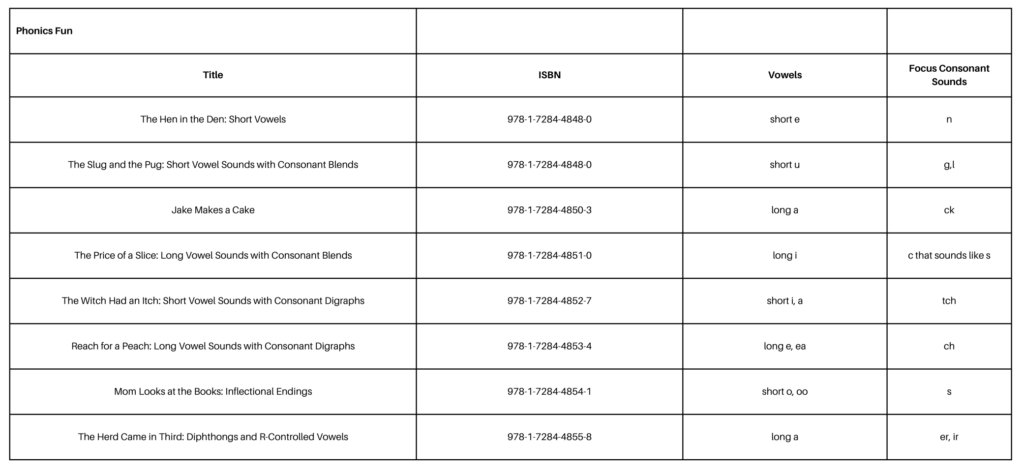
Lerner publishing offers many free teaching resources you could peruse to support instruction.
Assets: Engaging – silly, funny, highly appealing to specific students, probably even striving readers in 2nd and beyond. Colorful, high quality books. Instructive in that they accomplish what they promise – highly decodable and focused solely on the phonics patterns listed. Lots of picture support. There are plenty of teaching resources if you have the time to peruse and choose. The title is a pretty accurate communication of which phonics skill you’ll be learning about.
Considerations: There are only 8 books, so this is meant to be seeded into your classroom library and book bins. These aren’t systematic or sequential, as they are not really a program. You’ll get to align them and fit them in as they best suit you and your students’ needs.
9. Reading Rocket suggestions – On their website, RR shares a list of “Decodable Text Sources” that might be worth checking out. I see BOB books top of the list, which are very popular among family libraries at home. The list is organized by age, which is very useful. Check it out!
10. UFLI suggestions – On the UFLI website, the very generous researchers have provided this google sheet to help you find resources and see how they align to their own phonics scope and sequence. Need more resources on the /sh/ digraph? Just head on down to row 60 (item 45) and you can find about 16 different publishers that have materials to suit your needs. I will list all of the resources below that I haven’t already covered in this blog post, and add a star if they are also referenced by Reading Rockets in the list shared above. You may want to check them out!
- Alphabet Series
- Center for the Collaborative Classroom
- Daffodil Hill Press
- Dog on a Log*
- Express Readers*
- Flyleaf Publishing*
- Great Minds Geodes*
- Half Pint Readers*
- hand2mind
- HMH Blend It Books
- HMH Start Right Readers
- IMSE
- Jolly Phonics*
- Junior Learning Beanstalk Books*
- Phonic Books (Beginner Readers)*
- Phonic Books (Catch-up Readers)
- Primary Phonics*
- RAZ-Plus
- Remediation Plus Readers
- SAVVAS
- Seriously Fun Decodables (on TPT)
- S.P.I.R.E.*
- Syllasense
- Whole Phonics*
I hope this review has given you some food for thought and some direction to help you make some purchases. If you are a classroom teacher, perhaps you’ve found some ideas above for using your classroom budget to seed your classroom library, and/or collaborate with your peers to build a collection of shared resources. If you are in a leadership position, hopefully you’ve found some inspiration to foster a clear universal phonics program that includes carefully vetted and intentionally selected decodables that align with your S&S, philosophy, and student needs.
![]()
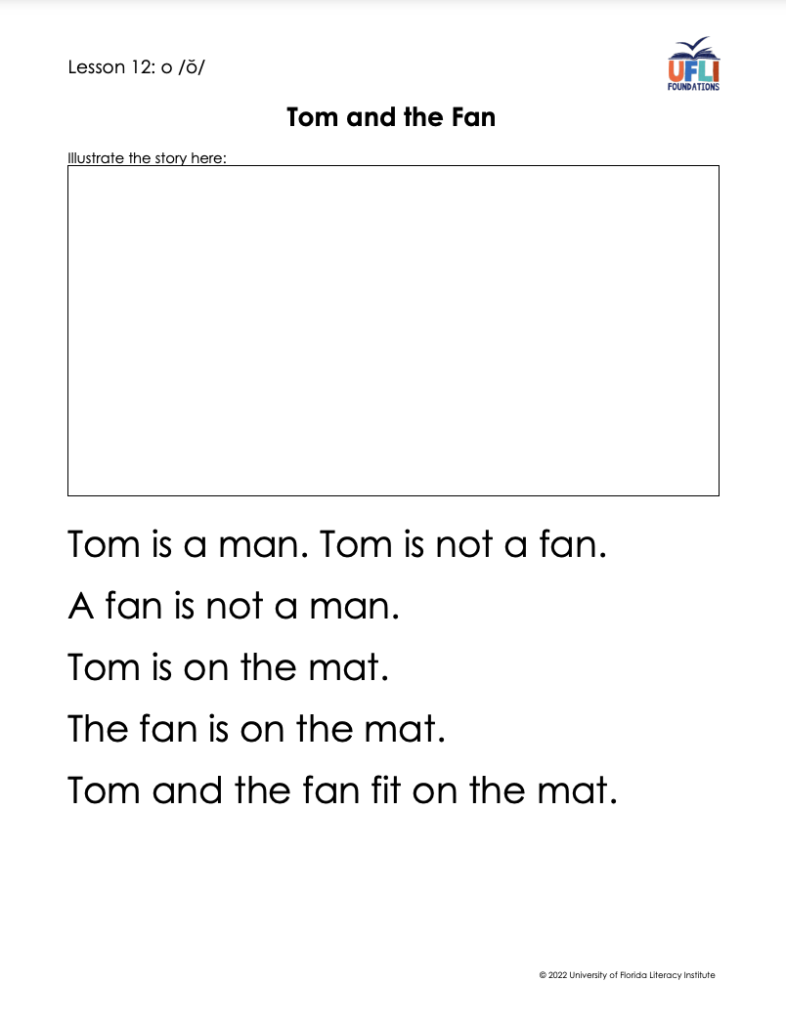


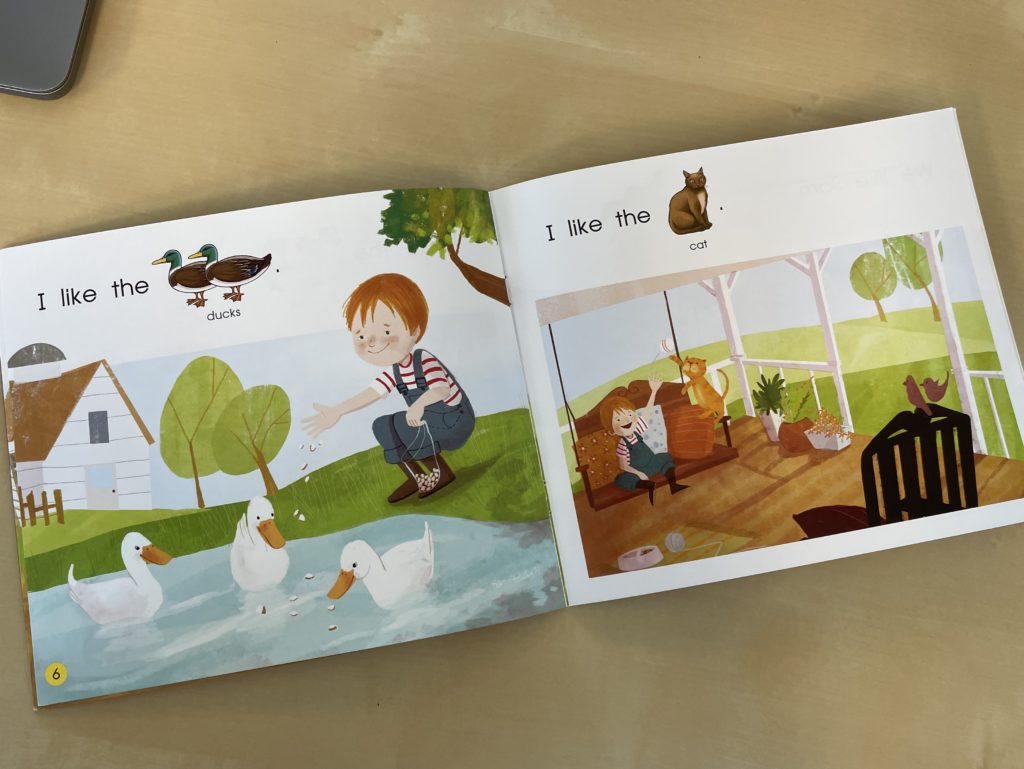
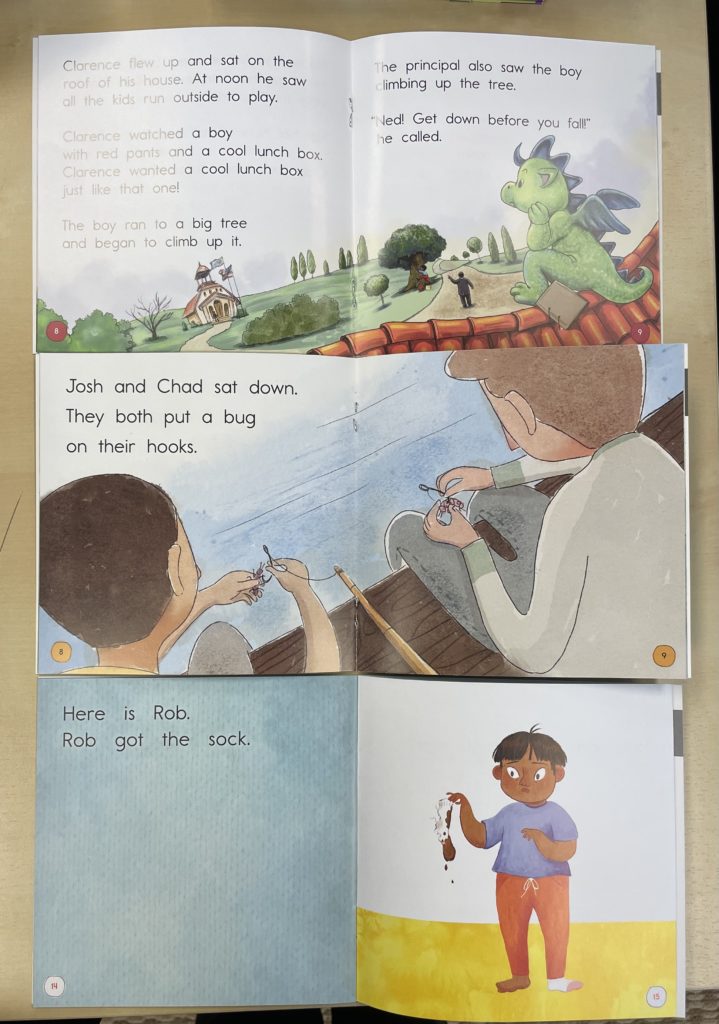







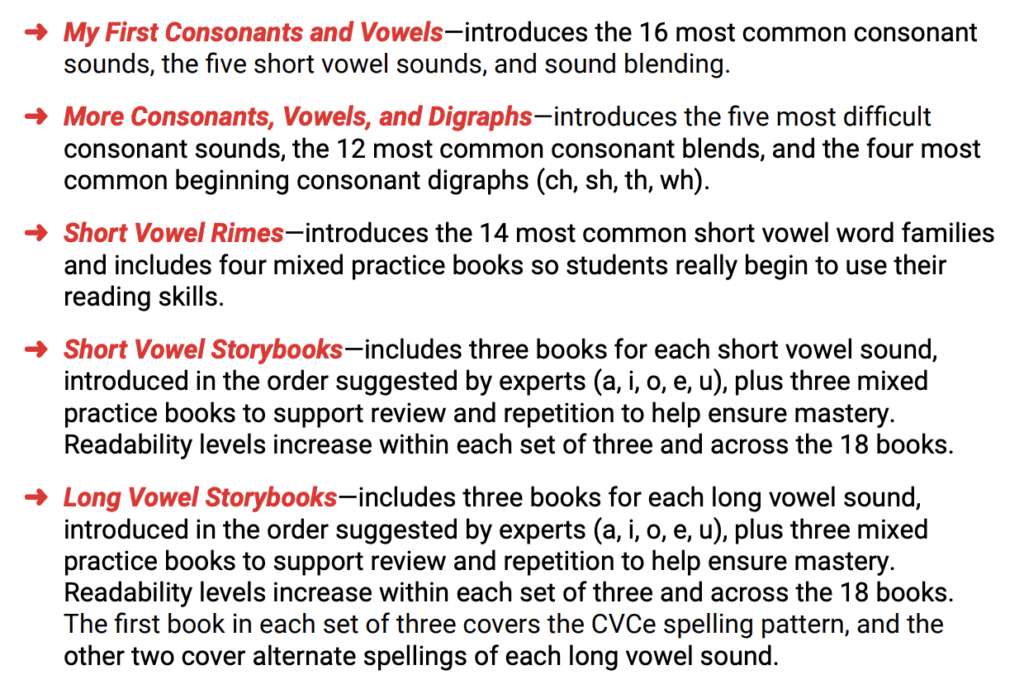

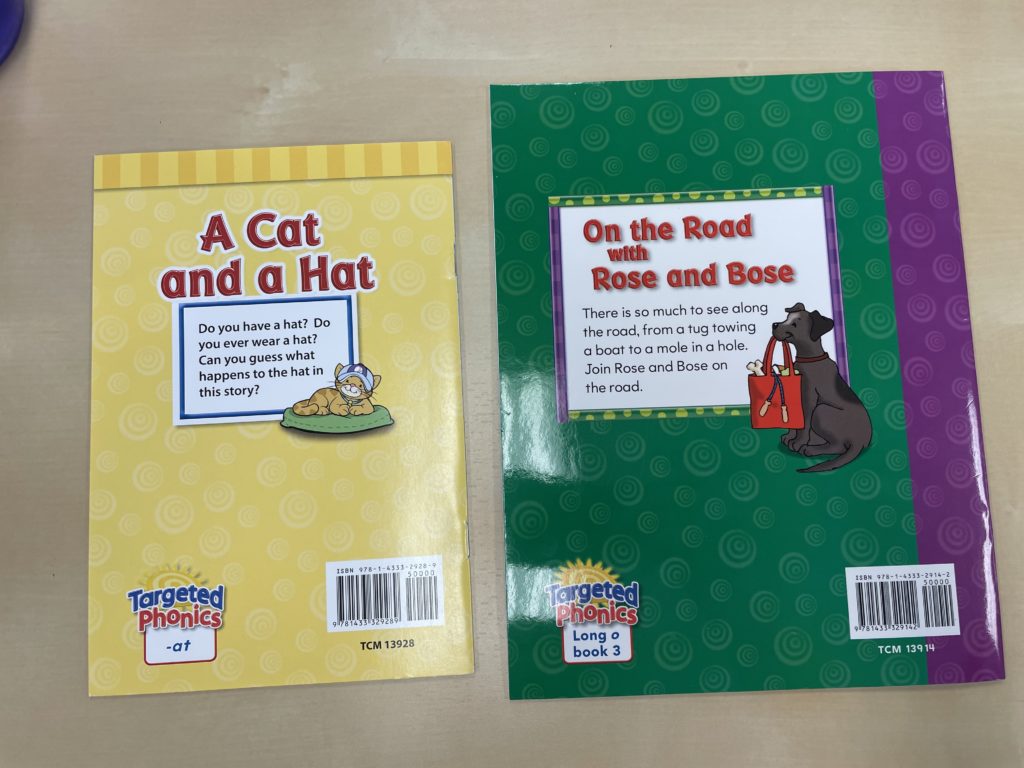




susan
August 27, 2023 at 10:10 pm (2 years ago)I love PhonicBooks- they are engaging and great for older readers that don’t want to be seen reading “baby books” https://www.phonicbooks.com/